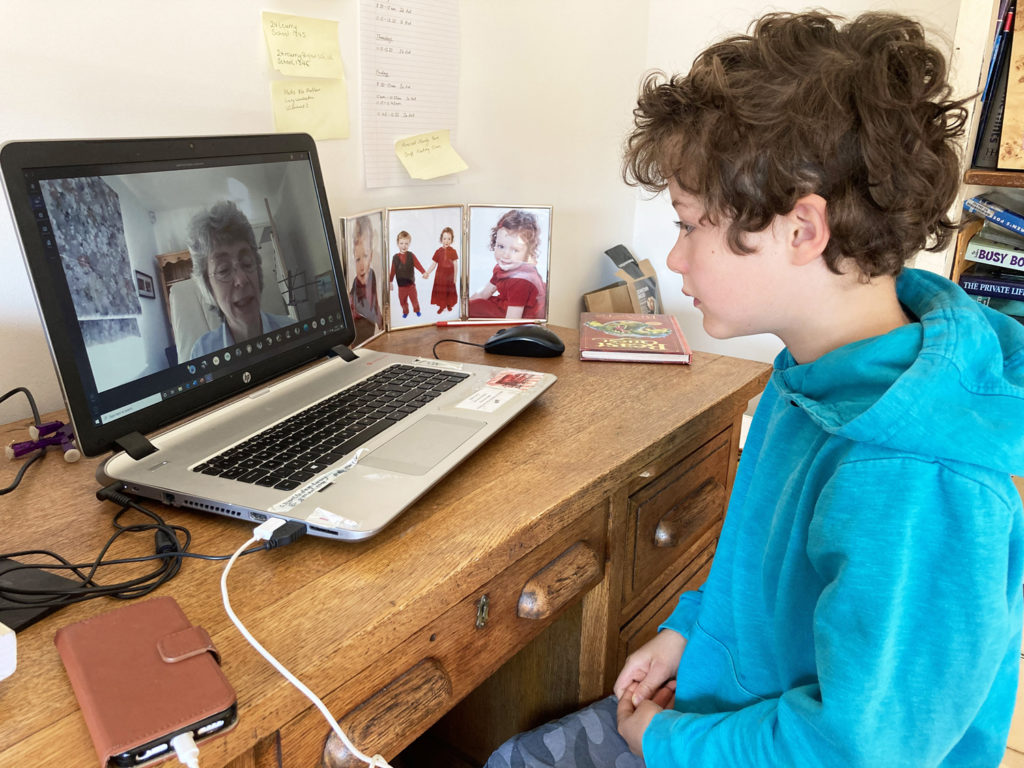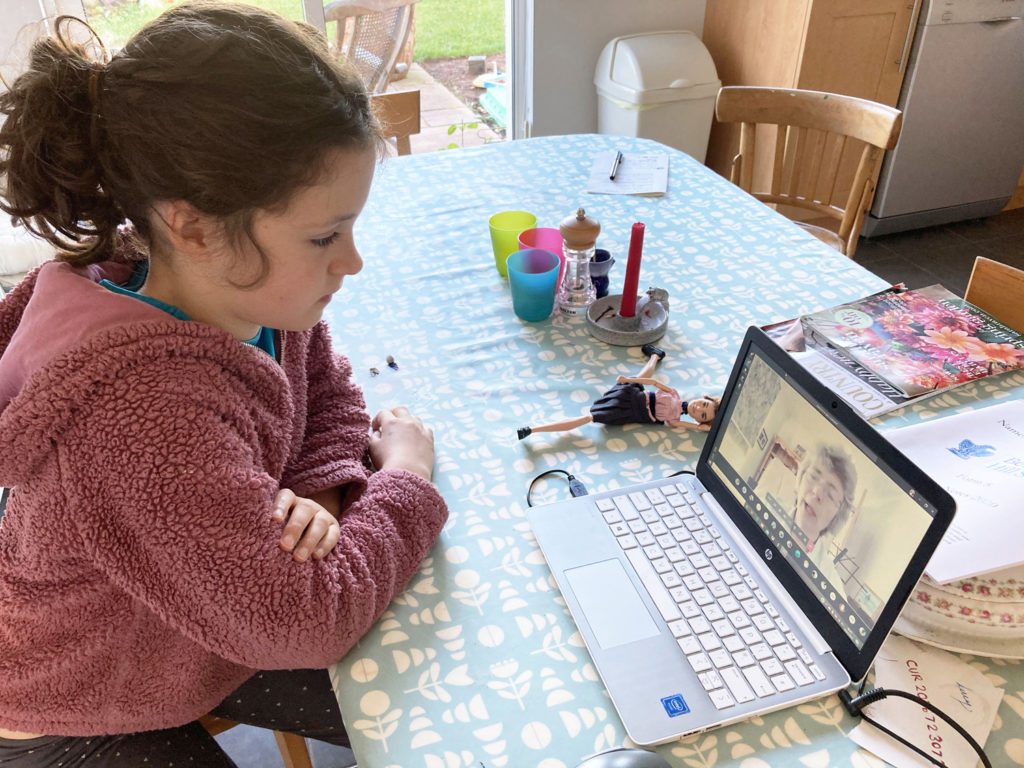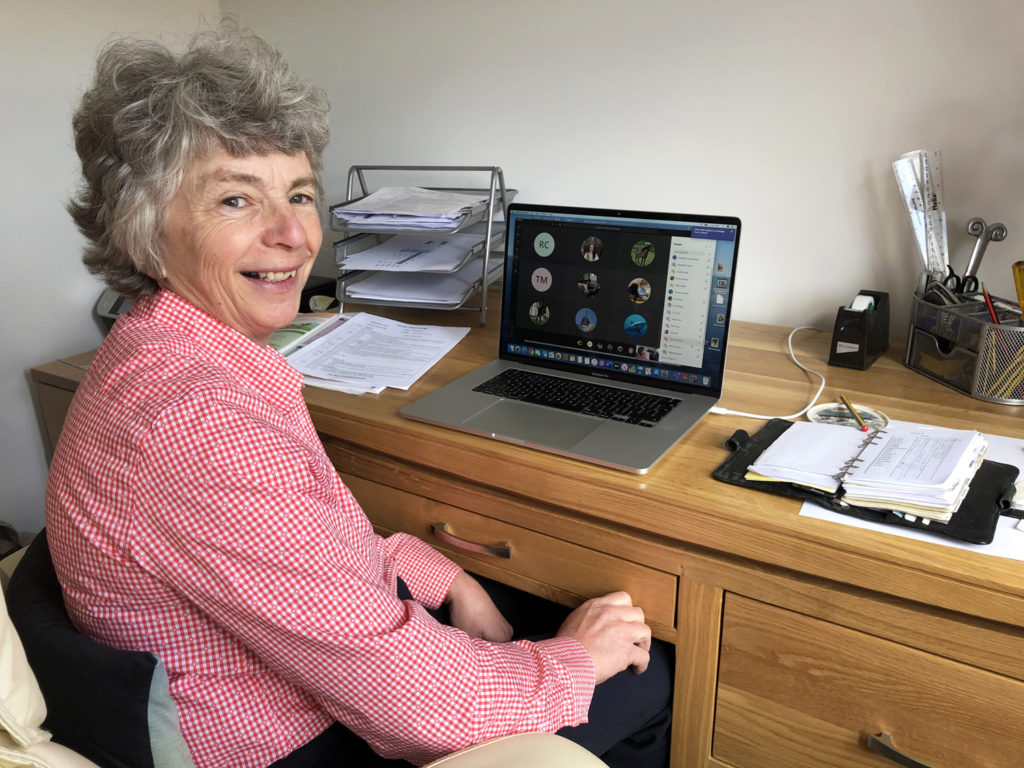Scottish Field caught up with members of staff and parents from Belhaven Hill School, a day and boarding preparatory school for seven to 13 year olds in Dunbar to find out how they were adjusting to lockdown learning.
How did you set up your distance learning programme?
Headteacher Henry Knight said: “The first question was deciding which distance learning platform to use – Microsoft Teams or Google Classroom?
“We went with Teams as Microsoft is more familiar to the pupils than Google.
“We then asked for advice from RM Education, our information technology (IT) provider, and other preparatory school heads.
“The actual academic content for the distance learning programme for the older years was created by John Marriott, Belhaven’s director of studies, and I created the pastoral content, having researched best practice from senior schools.”
Mandy Parks, who teaches the younger children at the school, added: “We are generally teaching the same curriculum.
“But, in order to deliver the lessons remotely, we’ve had to adapt our plans and make additional resources that the children can access online at home.
“This includes making homemade video clips, quizzes, photographs of textbook pages, revamped worksheets and, sometimes, children presenting their own equipment such as electricity kits.”
What is the feedback from parents?
Catherine, mother of Eck, said: “It was with some trepidation that we switched on the computer for the first day of distance learning.
“Despite the many instructions emailed through the holidays, I was doubtful that my nine-year-old would be able to sit in front of a computer for much of the day and actually do some work.
“I was also nervous of my own ability to help as well as our patchy internet connection.
“Despite a few teething problems, all worries were soon allayed as it turned out the children were far better at technology than I had given them credit for and were soon whizzing around Teams, downloading and uploading work and even managing to sit still, more or less, for the duration of every lesson.
“Being able to see their teachers has been incredibly beneficial, as has the interaction between school friends, whom they miss terribly.
“We can’t wait to be back at Belhaven, but in the meantime distance learning is providing a crucial link to friends, a continuation of work and a sense of normality in these strange times.”
Aliona, mother of Ivan, said: “Ivan is really enjoying the lessons, particularly his art, despite missing all his friends.”
Jim and Alice, parents of triplet girls, added: “A huge thank you to all the team but particularly Mrs Parks, Mrs Millman and Mrs Townshend, who have all been fantastic with the girls this week… unruffled by distance learning, always encouraging and keeping up a great pace for all the kids regardless of whether they are ahead or behind. A quite incredible effort.
“How they manage to keep control of an unruly bunch of tearaways over the internet is a wonder… we struggle in the same room. Perhaps a separate lesson in itself…”

Given the challenges of lockdown, how did you train the teachers?
HK: “The setup for Microsoft Teams was relatively quick.
“We closed the school on Friday 20 March and we were having [training] on Teams after the weekend on Monday 23 March.
“The whole process of training on Teams was driven predominantly by Kay Holliday, head of science and IT, and everything was done remotely.”
Kay Holliday added: “The set up was quick because all the software was there ready to use; we just needed to train staff so they could set up their classes and start creating resources.
“There were a couple of opportunities we took before the school closed to demonstrate the basics and get staff familiar with the platform.
“After this, we were forced to do training online due to the closure.
“I created video content for staff to use, from setting up a team to providing feedback on assignments, along with running live sessions.
“We did two days before the real break for Easter and then I offered a questions and answers session in the middle of the holidays.
“Most staff quickly became confident with the system.”
How similar is the distance learning to being in a classroom?
HK: “Distance learning is totally different to being in the classroom.
“Pupils do not have access to their video.
“This means that they can see and hear us and we can hear them, but not see them; and they cannot see each other.
“We can share our work, whiteboard and screens with the boys and girls and view their screens to see what they are doing.
“We use Chat and leave meetings open during our lessons so that the children can come and talk to us.”
MP: “Teaching a group of eight and nine years who I cannot see, not knowing whether they are listening to my voice, was very disconcerting at first, but as time has progressed the boys and girls have become far more confident and very skilled at asking questions and navigating the technology.
“Sometimes they ask if I can share their screen to receive a little extra support and guidance.
“At the beginning there was a huge amount of parental input, but now the children forget that they are in a virtual lesson.
“It seems as if the parents are still there in the background but can now allow their kids to work quite independently.
“Remote learning has had a really positive impact on their listening skills.
“Sometimes pupils are encouraged to catch up with assignments, but homework as such is not set, because by the end of the day, the children have used up most of their powers of concentration and they are ready for outdoor activities and games time.”
KH: “Children are able to work at their own pace.
“Assessment for learning is less varied and slower.
“However, we are now creating more digital evidence of understanding through quizzes so we can still plan based on those.
“Staff are required to troubleshoot technical issues that pupils experience at home, which can slow down a lesson.
“As the term has gone on, staff and pupils have gone through a steep IT learning curve, which is no bad thing.
“Now these technical issues are resolving faster and happening less often.”

How quickly did your children adjust to virtual lessons? How are you adjusting the approach?
HK: “They picked it up very quickly.
“We gather feedback from daily form teachers’ meetings, weekly tutor meetings, pupil surveys by subject, and a parental survey.
“The approach is constantly changing as we become increasingly aware of the tempo of online learning and the speed at which the children are able to work.”
KH: “As Microsoft brings in updates in response to user requests, we take on board the ones we find most useful.
“For example, it has rolled out the ‘raise hand’ feature, which allows pupils to get the teachers attention without having to interrupt them.”
Which are the most popular virtual lessons?
MP: “Some subjects are quite fun to teach, but others are harder.
“I enjoyed cutting up apples and pieces of bread and making a YouTube video for my class when introducing fractions.
“I really liked encouraging the children to answer comprehension questions then asking them to write a story about an imaginary camping trip.
“The activity set for that afternoon was to put up a tent in the garden.
“Some delightful photographs were sent in and one boy gave me a virtual tour of his garden and bright orange tent.
“The creative writing that I read on the computer was impressive that evening, and I was so excited I sent some examples to the headmaster.
“The children have also enjoyed their online lessons on Victorians and our topic on China; they really appreciated my multiple-choice questions which included some ridiculous answers that caused some giggles.”
What are the traits that good virtual teachers need to have?
HK: “The same traits that all good teachers have: knowledge, patience, dedication, adaptability, compassion, understanding, aspirations…
“I have been constantly amazed by the way the teaching staff have embraced this new way of working.
“Some have found it easier than others but the quality of training and support from Kay has been so good that everyone is now working on a similar level.
“It has definitely been hardest for those teaching at the lower end of the school, where the children’s IT skills and ability to concentrate and work independently are constantly tested.
“Mandy Parks, who teaches the eight-to-nine year olds, has been absolutely unbelievable: 15 boys and girls in one class; all day, every day; it is an extraordinary achievement.”
MP: “It is extremely hard work for the teacher, but hopefully quite fun for the younger children, and it seems as though the novelty hasn’t worn off yet.
“I have set them quite a few quizzes, which I think they really enjoy, but we have also accomplished serious work, which has included writing narratives and poetry.
“Microsoft Teams includes an area where we can store files – probably the equivalent of the classroom library – a class notebook that compares to their jotters and a section for assignments.
“There’s also an area where the children can see their grades and any comments written about their work.
“The children are showered with praise and in return parents and children have been very enthusiastic and conscientious.
“I think one of the most valuable documents produced each week is the form-tracking document.”
How do you ensure your high level of individual attention is still achieved?
HK: “In this new remote environment, we provide individual attention through the tutor system but also using form teachers, house parents and all teaching staff.
“The electronic communication amongst staff about how individual pupils are getting on is stronger and more fluid than ever.”
How are you managing to deliver a rich all-round education remotely, with sports and extra-curricular activities?
HK: “It was really important for us to do this and so an enormous amount of thought went into the co-curricular programme – arranging for all peripatetic music staff to continue with individual music lessons; and art, physical education and design technology have stayed in the school timetable.
“We set: daily sporting tasks and challenges with coaching feedback offered on any videos sent in; weekly sporting challenges; an ongoing athletics training programme; fitness and conditioning sessions; and daily and weekly activity challenges.
“Our oldest boys and girls have learned to iron a shirt, to cook a two-course dinner for their parents, and even learnt some basic sign language.
“Further down the school, they have been building dens, baking cakes and learning to juggle.”

Read more stories about how schools are coping with lockdown on Scottish Field’s education pages.
TAGS

